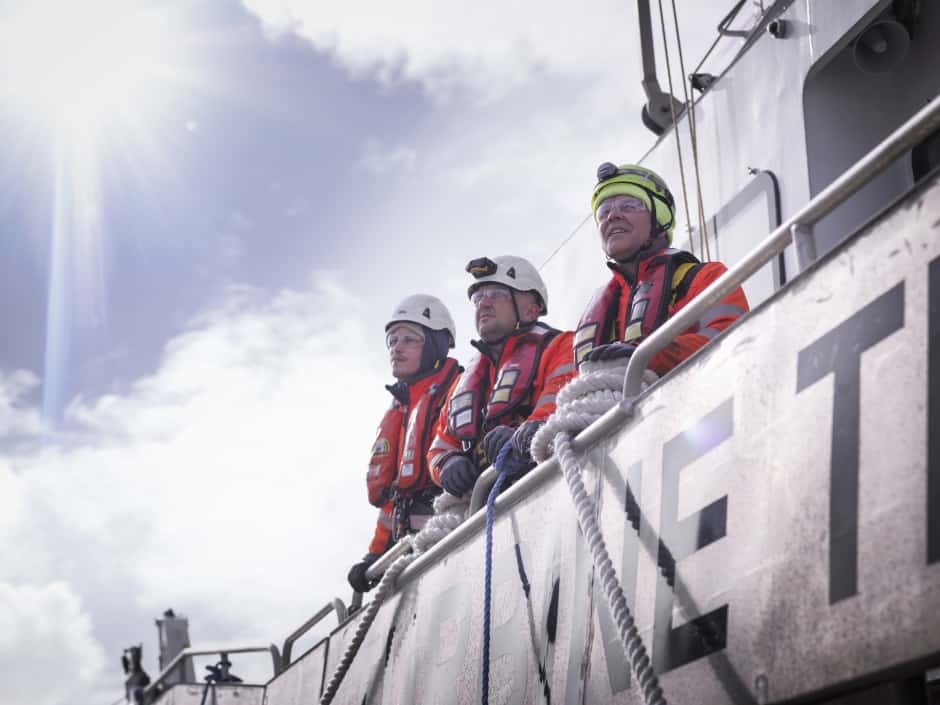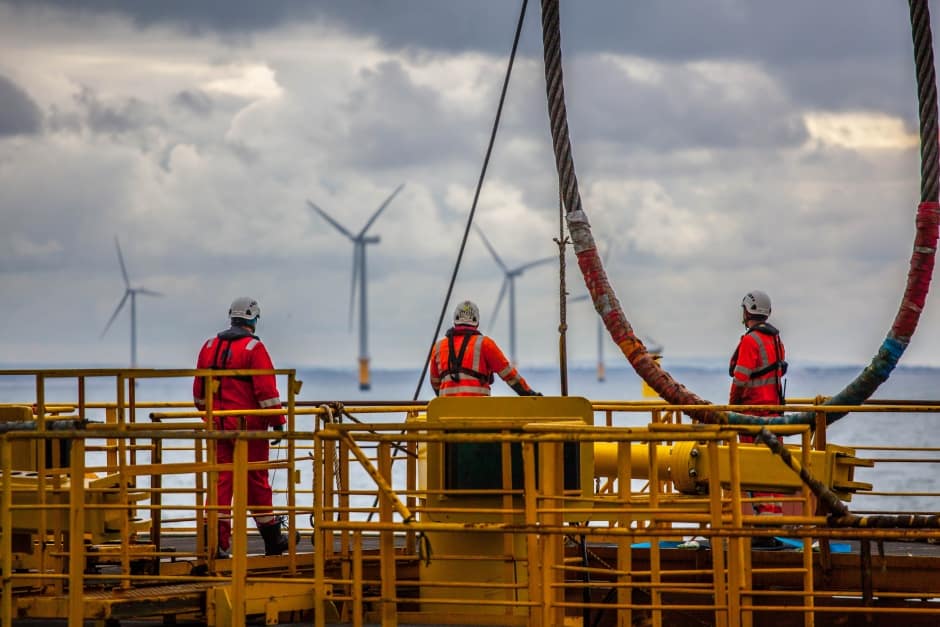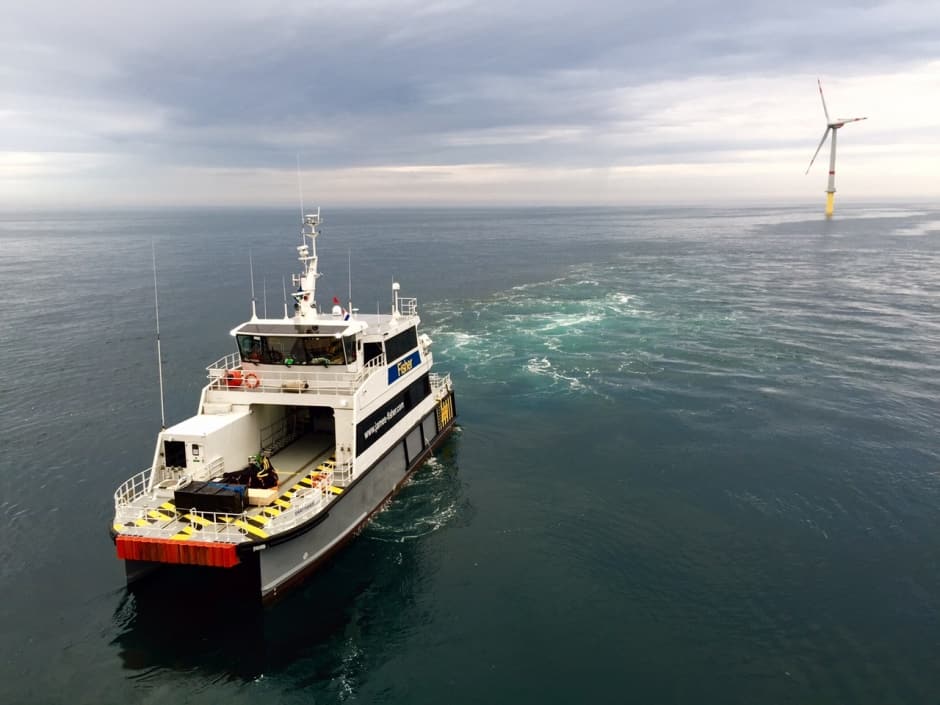While the nuclear sector remains has been beset by indecision, and other areas of industry are still reeling from the decision to leave the EU, the extraordinary ambition of the UK offshore sector is relatively undimmed.

Offshore wind already contributes 5 per cent of the UK’s electricity and supports around 15,000 jobs. Here in the UK, the aim is to source 15 per cent of our energy from renewables by 2020 and by the end of this decade the UK’s offshore wind sector is expected to have doubled in size.
Unsurprisingly, according to those close to the industry, all of this growth and optimism, and consequent demand for a raft of technical skills, mean that it’s a pretty good moment to consider a career in the sector.
Bessie Lau-Norris is a senior recruitment specialist at Denmark’s Dong Energy, whose Hornsea Project One wind farm, currently in construction just off the Yorkshire coast, will be the world’s first offshore facility of its kind to exceed 1GW in capacity.
“As a company we are investing billions of pounds in new UK wind projects that we’ll need to recruit for so it’s a great time to join if you’re looking for a long-term career,” she told The Engineer.
And as Dong continues to expand its offshore wind operations in the UK (earlier this summer, ministers gave the go-ahead for Hornsea Project 2 – a 1,800MW extension to the Hornsea scheme), Lau-Norris said that the firm’s demand for engineers of all kinds will only increase. “We cover most aspects of offshore wind energy generation, including planning and design where we might need geotechnical or environmental engineers, right through to operations and maintenance where we need technicians and operations managers. We’re always on the lookout for qualified electrical engineers as there’s a lot of high voltage and cabling work in the design process, but we’re growing at such a fast rate we’re recruiting for lots of different disciplines.”

Chris Rawley, divisional manager for renewable energy at engineering recruitment specialist Matchtech, confirmed that a wide range of skills are currently in demand across the sector. “The majority of job opportunities are within operations – wind-turbine technicians and blade technicians continue to be in high demand,” he said. “However, with an influx of large projects on the horizon there are, and will be an increasing number of opportunities available for civil, mechanical and electrical engineers, as well as architects and planners.” Rawley added that with wind projects becoming larger in size companies are particularly keen to find people with experience on the newer, larger, wind-turbine models.
Employers are also increasingly keen to hear from engineers from other sectors. “There are lots of roles that require skills that can be transferred from other industries,” said Lau-Norris. “We take on electricians and mechanics from a whole range of sectors. As long as candidates have the right experience, attitude and are suitably qualified for the role, then it doesn’t matter if they’ve worked in renewables before.”
Unsurprisingly – given the similarities in the working environments – skilled engineers from the oil and gas sector are particularly in demand. “We’ve seen a lot of people come across from the oil and gas sector as their experience working offshore can help,” said Lau-Norris.
Indeed, given the current downturn in the oil and gas sector, industry body RenewableUK is putting pressure on government to look at ways of making the transition from hydrocarbons to renewables as easy as possible.
“The UK is perfectly placed to take advantage of its 40 years of offshore expertise by easing the transition for workers from fossil fuels into renewables” said Maf Smith, deputy chief executive of RenewableUK.
As well as Dong’s Hornsea activity, key offshore wind projects in the UK at the moment include Scottish Power’s £2bn East Anglia One project; Dong’s Walney Extension windfarm in Cumbria; the Dudgeon Offshore wind farm (off the coast of Norfolk); Suffolk’s £1.5bn Galloper windfarm; and RWE NPower’s Triton Knoll project.

As well as this, a number of large onshore projects are also being developed, particularly north of the border. These include: Dorenell (approximately 200MW and now owned by EDF), Kype Muir (89MW) and Middle Muir (51MW).
All of these projects are creating a demand for engineers. For instance, according to Lau-Norris, Hornsea Project One has the potential to create around 2,000 jobs during its construction phase with up to 300 additional jobs supported directly and indirectly throughout its operational phase.
Looking further into the future, Hornsea Project 2 (HP2), which is awaiting a final investment decision from Dong, and Hornsea Project 3, which is also in the pipeline, look set to create even more demand. “If these projects go ahead we’ll need lots more engineers to develop, operate and maintain them, but it’s too early to say how many at this stage,” said Lau-Norris.
Interestingly, unlike many other sectors, which have reported a post-Brexit slowdown in recruitment following the UK’s EU referendum, offshore wind has thus far been relatively unaffected. “Brexit has not changed our long-term commitment to the UK,” said Lau-Norris. “As a company we’ve already invested £6bn in the UK and plan to double that by 2020. So in terms of our recruitment activity, this will continue as we develop new wind-farm projects. We’ve got engineering vacancies at the moment and we will continue to need qualified engineers to help us deliver clean, sustainable energy to the UK.”
Chris Rawley, divisional manager for renewable energy at engineering recruitment specialist Matchtech, echoed this, although warned that an end to free movement of EU nationals – one possible outcome of Brexit negotiations – could hit the sector in the years ahead. “Should EU nationals need to obtain visas to work in the UK in the future, we could face an increase in skill shortages,” he said.
As well as offering good solid career prospects, Lau-Norris said the sector has some other major attractions, not least the opportunity to do something considered worthwhile and interesting. “If you’re looking for an interesting job in a growing industry, where you can go to work every day knowing you’re doing something good for the planet then go for it. Our wind-farm projects have a life of 25 years, then there’s the decommissioning phase so working in this industry could give you a job for life. Also there are some really exciting and unique roles, for example, our technicians get to work via boat, occasionally via helicopter, and then climb huge turbines, so there are plenty of options for engineers that don’t want to be office based. Equally, if you’d rather not be climbing a 195m high turbine – we’ve got lots of office-based roles too.”




Swiss geoengineering start-up targets methane removal
No mention whatsoever about the effect of increased methane levels/iron chloride in the ocean on the pH and chemical properties of the ocean - are we...